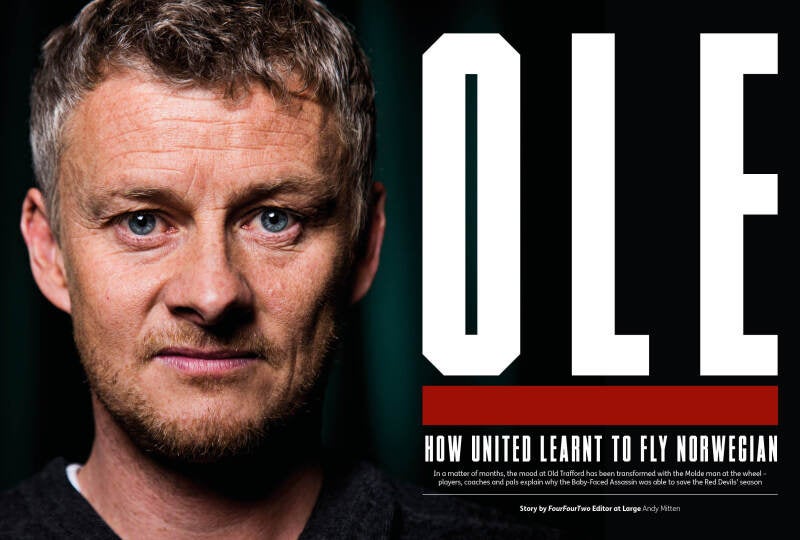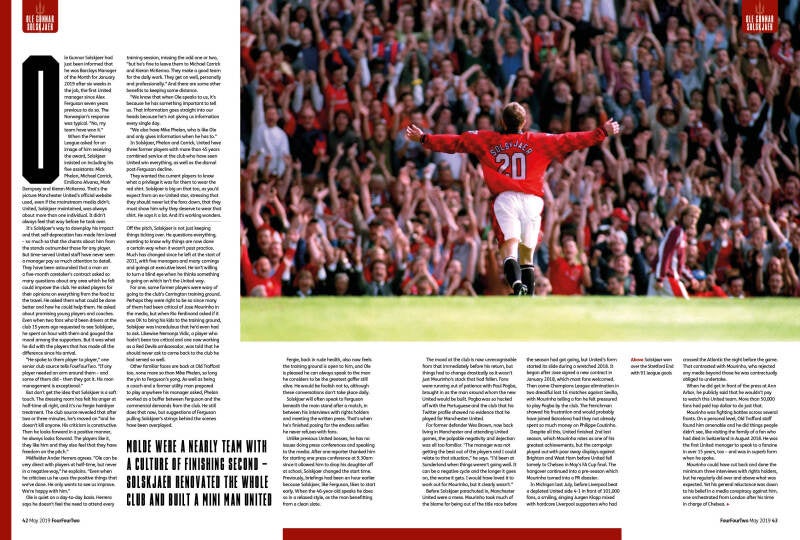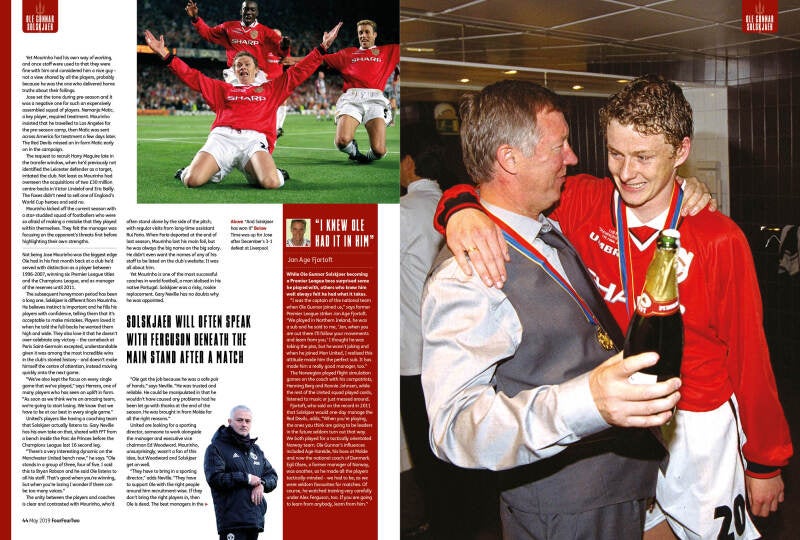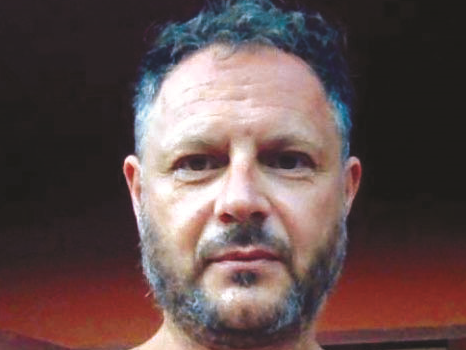
Lads’ mag pioneer James Brown is back in the editor’s chair after 15 years and admits the magazine industry sometimes makes him feel like “getting a fire hose and putting the fire out a bit”.
Brown got started on NME before launching Loaded in 1994. He subsequently edited GQ for two years and then launched now-defunct men’s magazine Jack, which closed in 2004.
He is now at the helm of football title Four Four Two, where, after being a reader since its start in 1994, he is now in the position to mark its 25th anniversary this year and its 300th issue coming next month.
Brown said he was not planning to return to magazine editing, but says this seemed like the “perfect job – a brand with room to grow, quality company, great subject and a core format that I love, which is print, and digital format, which I know a bit about”.
Brown, whose first issue of Four Four Two, which is owned by Future Publishing, hit newsstands this week, tells Press Gazette he was changing the title’s “old fashioned tendency” to focus its efforts on print.
“I’ve watched magazine brands in decline and thought ‘this shouldn’t be happening’,” he says. “You should be able to fight your way out of this and establish yourself as profitable brands across different platforms.”
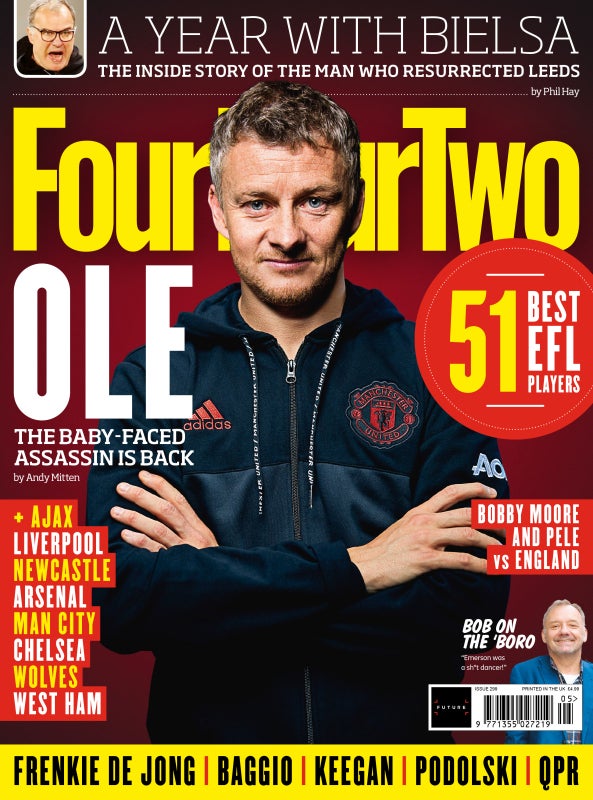
Praising cover lines seen on the likes of Tatler, Cosmopolitan and Empire, Brown adds: “They’re mainstream magazines that aren’t going down. They’re vibrant. And I think more magazines should be like that.
“I know it’s difficult, but I thought I need to go and help.
“That’s what I felt like having sold a lot of magazines and created magazines and created genres and sectors. Sometimes I feel like getting a fire hose and putting the fire out a bit.”
Four Four Two has seen its circulation drop by about 50 per cent in five years, falling from 87,658 in January to December 2013 to 44,692 in the second half of 2018, according to ABC figures.
But Brown says he has not looked at Four Four Two’s sales, pointing out instead that the brand has more than 500,000 followers across Twitter and Instagram (467,000 and 37,000 respectively).
“So they’re taking information from us and interacting with us on a much huger scale than anyone previously did in print,” he says.
Brown officially joined the magazine on 11 March, and tells Press Gazette that from 25 March to 1 April page views increased week-on-week by 80 per cent, while unique users rose by nearly 70 per cent.
This came after he pushed for Four Four Two’s online content to become more “topical, personal, punchier and faster reacting”, with a “more visitable” website.
“We’re delivering the same sort of passionate love and knowledge about football, but we’re just being a bit sharper about how it’s going out,” he says. “We’ve not significantly changed the type of content that we’re doing.”
His new team also changed the frequency, timing and way they wrote tweets, and rearranged the staff rota so the website is now manned all weekend.
In his first editors’ letter to readers this week, Brown praised the staff for doing a “fantastic job of responding to my instant desire to jump-start the title and bring in some new ideas and sections”.
“I think there was a tendency, quite an old fashioned tendency, that they were focusing their efforts on print, but actually the growth for this title will be online.
“There’s no way you can suddenly put on 30 per cent sales,” he says.
“The potential for growth is utilising Future’s understanding of how to market on the digital platforms and my understanding of how to do editorial.
“How I see it is the magazine is like the Sunday Times. It’s a big must-read, weighty, in-depth, keep-it-around publication. It’s got tangible value and you can collect or hold onto it.
“The website is like a really buzzy daily paper, [like] maybe the i paper, and then the social is like the equivalent of putting out a radio bulletin every half-an-hour.
“That’s to equate what we’re doing to more traditional media, but they’re all the same information, they’re just delivered in different ways and at different lengths.”
All eight Four Four Two staff members work across print and digital. Brown wants more crossover, with writers expected to take photos of themselves with their interviewees for the brand’s Instagram, for example.
“Can you imagine if the gift box of Maltesers didn’t want much to do with the tiny bags of them? It would be nuts,” Brown says.
“So we just needed to bring it a little bit up-to-date that actually we’ve got all these brilliant platforms with lots of people interested, let’s use them properly.”
Under his watch, the title is also launching a podcast and newsletter for the first time and is set to create video content with brands.
For the past decade Brown has been running creative agency Sabotage, which worked with brands like Puma, JD Sports, Topman and Paddy Power. He also acted as a media consultant to brands like the Mail on Sunday and helped to launch The New European newspaper.
Brown – who authored a book about football last year, Above Head Height: A Five-A-Side Life – has just finished writing his second book about “music, magazines and mayhem” about his publishing career.
“I think writing my book made me think I really must do this again, but without all the drugs,” he said.
Brown has been open about his past abuse of drugs and alcohol, describing himself as a “recovering addict” in a comment piece for The Big Issue in 2017.
“The thing is, I was at the forefront as an editor of the last golden age of magazines when we sold hundreds of thousands of copies and just lived a charmed life. It was an absolutely great period.”
Email pged@pressgazette.co.uk to point out mistakes, provide story tips or send in a letter for publication on our "Letters Page" blog

